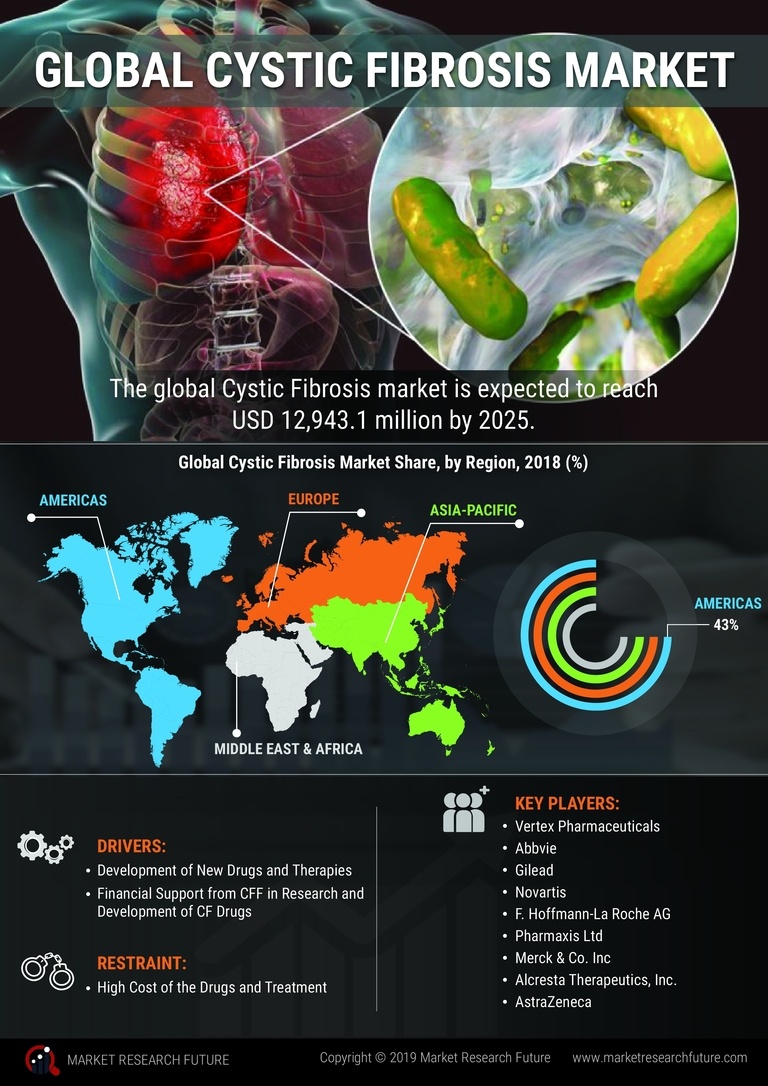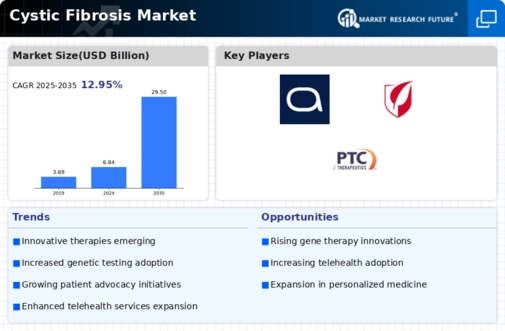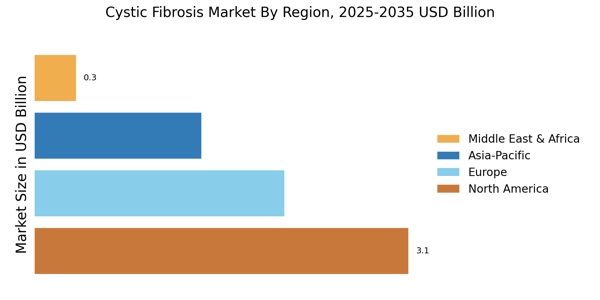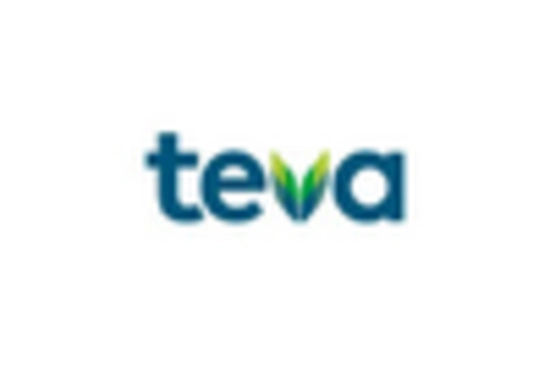Growing Awareness and Advocacy
The increasing awareness and advocacy surrounding cystic fibrosis play a crucial role in shaping the Cystic Fibrosis Market. Organizations dedicated to raising awareness are actively engaging in educational campaigns, which help to inform the public and healthcare professionals about the disease. This heightened awareness leads to earlier diagnosis and treatment, ultimately improving patient outcomes. Furthermore, advocacy groups are instrumental in lobbying for research funding and policy changes that benefit patients. As more individuals become informed about cystic fibrosis, the demand for effective treatments and support services is likely to rise, thereby driving growth in the Cystic Fibrosis Market.
Advancements in Drug Development
Innovations in drug development are significantly influencing the Cystic Fibrosis Market. The introduction of novel therapies, particularly those targeting the underlying genetic mutations, has transformed treatment paradigms. For instance, the approval of CFTR modulators has shown promising results in improving lung function and overall quality of life for patients. The market for cystic fibrosis drugs is projected to reach USD 10 billion by 2026, reflecting the potential for continued growth. These advancements not only enhance treatment efficacy but also attract investment from pharmaceutical companies eager to capitalize on the lucrative market. As research progresses, the emergence of new therapies is expected to further invigorate the Cystic Fibrosis Market.
Technological Innovations in Healthcare
Technological advancements in healthcare are transforming the landscape of the Cystic Fibrosis Market. Innovations such as telemedicine, wearable health devices, and mobile health applications are enhancing patient management and monitoring. These technologies facilitate better communication between patients and healthcare providers, allowing for timely interventions and personalized care plans. The integration of technology into treatment regimens is expected to improve adherence to therapies and overall health outcomes. As these innovations become more prevalent, they are likely to attract investment and interest from stakeholders in the Cystic Fibrosis Market, further driving growth and development.
Increasing Prevalence of Cystic Fibrosis
The rising incidence of cystic fibrosis is a pivotal driver in the Cystic Fibrosis Market. Recent estimates indicate that approximately 30,000 individuals are living with cystic fibrosis in the United States alone. This growing patient population necessitates enhanced treatment options and healthcare services, thereby propelling market growth. As awareness of the disease increases, more individuals are diagnosed, leading to a higher demand for therapies and supportive care. The increasing prevalence is not limited to one region, as cystic fibrosis affects various demographics worldwide. Consequently, pharmaceutical companies are likely to invest more in research and development to address the needs of this expanding patient base, which could further stimulate the Cystic Fibrosis Market.
Regulatory Support and Funding Initiatives
Regulatory support and funding initiatives are vital drivers in the Cystic Fibrosis Market. Governments and health organizations are increasingly recognizing the need for enhanced research and treatment options for cystic fibrosis. Initiatives aimed at providing grants and funding for research projects are becoming more common, which could lead to breakthroughs in treatment. Additionally, regulatory bodies are streamlining the approval processes for new therapies, enabling quicker access to innovative treatments for patients. This supportive environment fosters a climate conducive to growth and development within the Cystic Fibrosis Market, encouraging pharmaceutical companies to invest in research and development.


















Leave a Comment